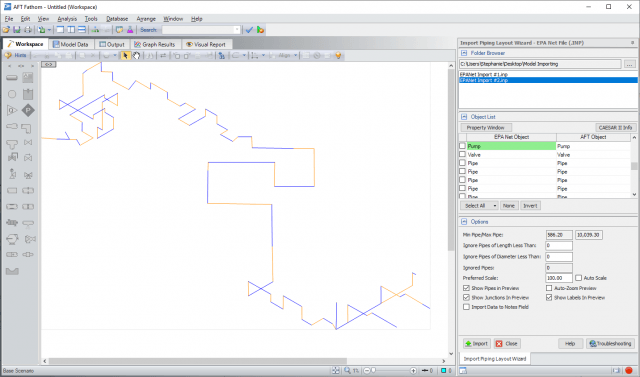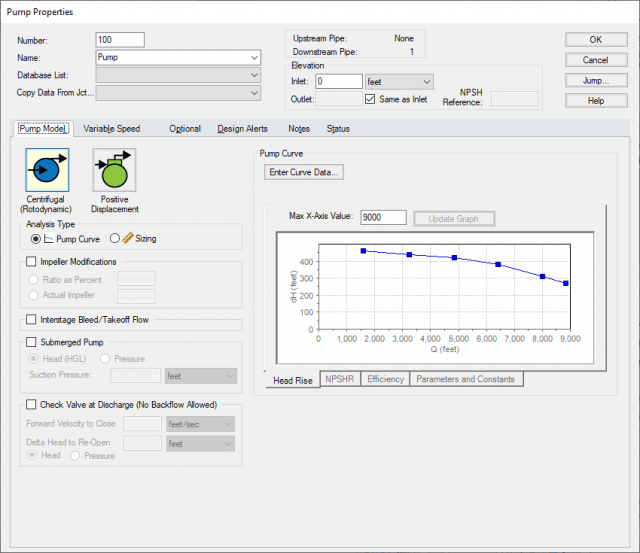Seeing as this month is water month, we thought this would be a perfect time to highlight some of the great ways that AFT Fathom 10 can help with hydraulic analysis for water distribution, wastewater, and fire water systems. From building the model to exporting and presenting results, we offer several helpful features.
We have heard our users' requests for a quick and simple way to import their piping files, and have added and updated our importing capabilities for EPANET,
After using this powerful import tool, you can see that all of the key information for my model has been imported, including elevation information, pipe geometries, reservoir liquid levels, and even the pump curves as seen in Figure 2. By simply setting the fluid data in the system properties, the AFT Fathom model is ready to be run. After performing analysis in AFT Fathom, any model can also be easily exported out to EPANET by simply choosing export from the file menu.
Once your model has been built in AFT Fathom, there are several powerful analysis features to help with further analysis of the system.
For applications such as cooling water systems, heat transfer can be modeled, including buried pipe and jacketed pipe models which are new in Fathom 10.
For wastewater systems, our add-on Settling Slurry Module assists with modeling the effects of solid particles on the hydraulics.
For firewater systems, our NFPA reporting can be a huge time saver to assist with analysis, including Hazen-Williams data and the ability to model loss in terms of equivalent length. Check out this blog from Ben for more information.
Beyond these features, any AFT Fathom model can be imported directly into AFT Impulse to model and resolve Waterhammer issues in the transient without needing to rebuild the model from scratch.
AFT Fathom and AFT Impulse can certainly save money and time when designing a system or analyzing existing issues in your system. To see our software at work in some existing systems, check out some of these great case studies to see how engineers put these features to use for their water and wastewater systems:

